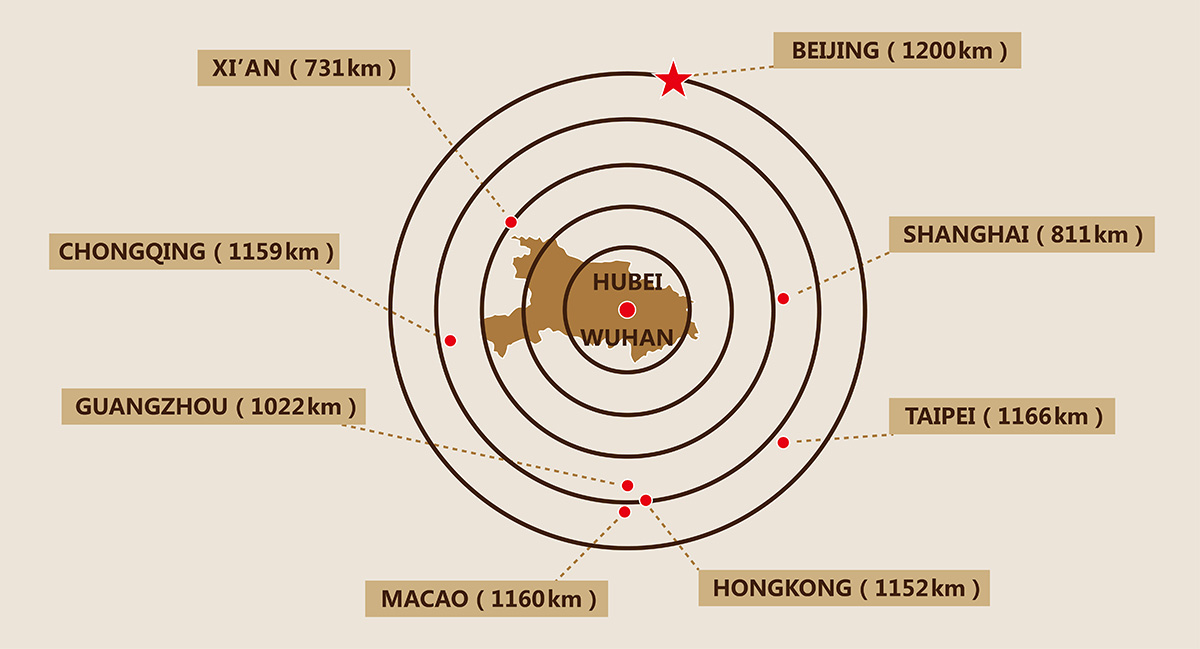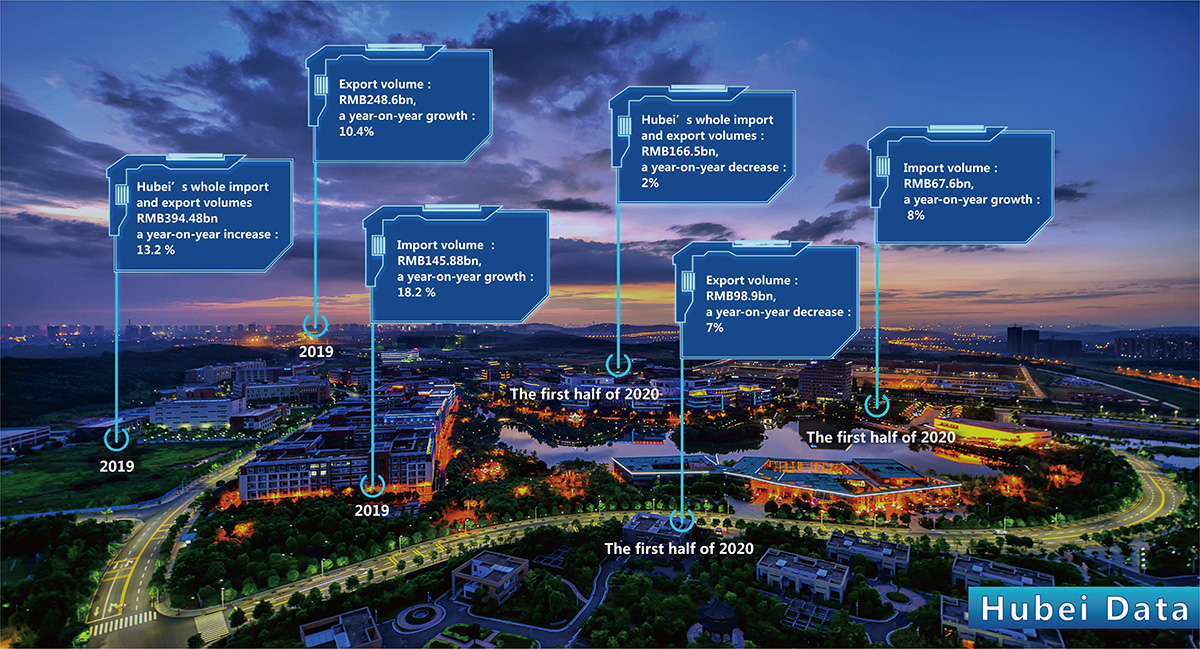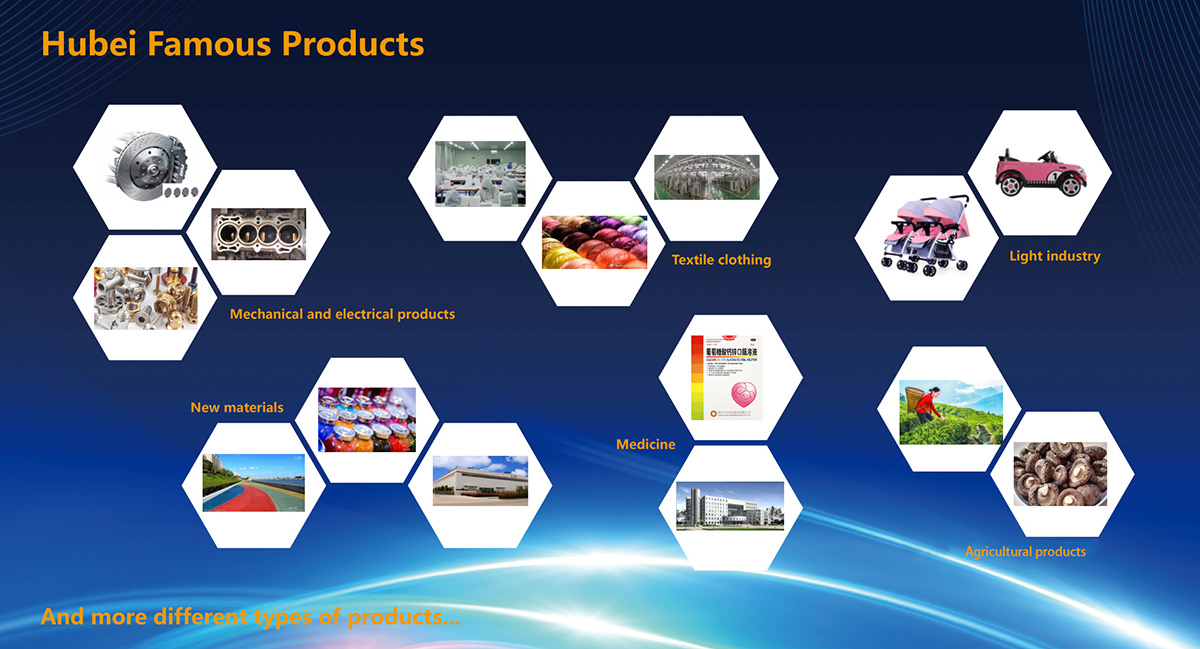Hubei Province offers numerous advantages due to its strong industrial and manufacturing bases, emphasis on developing high and new technology, high-quality human resources and its profitable location along the Yangtze River economic belt
Hubei Province, located in central China, connects the eastern part of Mainland China with the west and links its north to the south. Due to its rich water resources, Hubei is famous as “the province with a thousand lakes”. The capital of Hubei is Wuhan, which has been an important transportation hub throughout history. Today, it is praised as the “Chicago of the East” as the city is Mainland China’s key trading port, product distribution centre and transportation and information hub.

Hubei is rich in mineral resources, encompassing 130 kinds of minerals, among which phosphate, plaster stone and rock salt rank among the greatest reserves in Mainland China. Water, electricity, natural gas and land are also abundant in supply and low in cost.
Hubei ranks third in Mainland China in terms of scientific and educational capabilities and resources, with more than 130 universities and colleges, a student population of approximately 1.5 million and more than 1,500 scientific institutes. It is also endowed with a low-cost, yet high-quality labour force. It ranks first in the Comprehensive Technological Innovation Index in central China and seventh in the nation.
Hubei has a well-developed modern service industry. Its total annual tourism revenue exceeds RMB600bn. The number of foreign financial institutions and listed companies in Hubei ranks first in central China, while its export of cultural products ranks first in the country. Hubei has 12 municipalities, one autonomous prefecture, 38 municipal districts, 24 county-level cities (including three sub-prefecture cities), 38 counties, two autonomous counties and one forest region.
Advantageous location
In recent years, Hubei Province has made considerable progress in establishing its ports. The number of ports has been growing steadily, and a comprehensive opening-up pattern efficiently linking water, land and air transportation has formed there. Hubei now has five international ports approved by Mainland China:- Wuhan Tianhe International Airport
- Yichang Sanxia Airport
- Wuhan Water Port
- Huangshi Water Port
- A temporary land port located at Wuhan Railway Container Center Station
- Wuhan East Lake Comprehensive Bonded Zone
- Wuhan New Port and Airport Comprehensive Bonded Zone
- Wuhan Economic Development Comprehensive Bonded Zone
- Yichang Comprehensive Bonded Zone
- Huangshi Chessboard Delta Bonded Logistics Center
- Yichang Three Gorges Bonded Logistics Center
- Xiangyang Bonded Logistics Center
- Xiantao Bonded Logistics Center
- Jingmen Bonded Logistics Center
- Tianhe International Airport for importing seedlings and seeds, fruit, edible aquatic animals, chilled aquatic products and meat
- Yangluo Port for fruit and meat
- Huangshi Chessboard Delta Ports for food grains
- Yangluo Port, Tianhe International Airport, and Wuhan Railway Container Center Station Port for medicines
- Wuhan Railway Port for vehicles
- East Lake Comprehensive Bonded Zone for meat

Solid industrial capabilities
Hubei boasts the seventh-largest provincial economy in Mainland China and is one of the nation’s fastest-growing provinces. The Three Gorges Dam, the largest hydroelectric project in the country, is located there. Among its many strengths, Hubei boasts some of the largest industrial bases in Mainland China, including one of the three largest iron and steel bases, the second-largest automotive production base, the biggest interfacing centre of optical fiber telecommunications in central China, as well as an optoelectronic IT industrial base and a shipping industry base. The province is also home to national industry bases for memory device production, commercial space industry and new energy vehicles and to one of the country’s high and new technologies bases, specialising in new materials, biotechnology and new medicines, aerostatics, lasers, digital control technology and computer software development.In addition to the aforementioned industrial bases, there are also 22 national development zones in Hubei, along with 81 provincial economic development zones and over 6,000 high and new technology enterprises.
The province is one of Mainland China’s leading producers of food grains, cotton and cooking oil, and is the largest base for the production of freshwater aquatic products in the country. In addition to its production strengths, Hubei is also the largest goods circulation and distribution centre in central China.
Wuhan is one of the country’s leading cities of service outsourcing and is a national strategic centre for promoting the rise of central China’s economies. Urban growth and development along the Yangtze River, led by Wuhan, is expected to become the fourth major growth region in Mainland China.

Top 13 national foreign trade transformation and upgrading bases
- Wuhan East Lake New Technology Development Zone, Hubei Province
- Wuhan National Automobile and Parts Export Base
- Wuhan Ship Export Base
- The Innovation Base of Rail Transit Equipment Industry of CRRC Yangtze Co Ltd
- Huangshi National Foreign Trade Transformation and Upgrading (Ferrous Materials) Base, Hubei Province (Ferrous Materials)
- Science and Hi-tech Innovation Base of Xiangyang
- Yichang New Material Industrial Park of Xingfa Group
- National Foreign Trade Transformation and Upgrading (Dressing) Base of Yunmeng County, Hubei Province
- National Foreign Trade Transformation and Upgrading (Edible Fungi) Base of Suizhou City, Hubei Province
- National Foreign Trade Transformation and Upgrading Base (Textile) of Xiantao City, Hubei Province
- National foreign Trade Transformation and Upgrading Base (Aquatic Products) of Qianjiang City, Hubei Province
- National Foreign Trade Transformation and Upgrading Base (Textile) of Jianli County, Jingzhou City, Hubei Province
- Jingzhou Economic and Technological Development Zone (Automobile and Parts) of National Foreign Trade Transformation and Upgrading Base

Twenty-three provincial foreign trade transformation and upgrading demonstration bases and characteristic industry cluster areas
• Agricultural and aquatic products
- Wuhan Bee Products Export Base
- Wuhan Tea Products Export Base
- Wuhan Aquatic Products Export Base
- Xiangyang Nanzhang Agricultural Products (Edible Fungi) Foreign Trade Transformation and Upgrading Demonstration Base
- Xiangyang Yicheng Agricultural Products (Edible Fungi) Foreign Trade Transformation and Upgrading Demonstration Base
- Egg Export Base of Gongan County of Jingzhou City
- Shendan Egg Products Export Base of Xiaogan City
- Quality and Safety Demonstration Zone of Export Food and Agricultural Products of Yingshan County, Huanggang City
- Demonstration Area of Agricultural Products in Suizhou
- Export Base of Selenium Products in Hubei Province
- Enshi Tea Export Base
- Lichuan Tea Export Base
- Xianfeng Tea Export Base
- Xiantao Aquatic Products Export Base
• Mechanical and electrical products
- Automobile and Parts Foreign Trade Transformation and Upgrading Base of Shiyan Economic Development Zone
- Xiangyang Automobile and Parts Export Base
- Suizhou Automobile and Parts Base
- Xiantao Mechanical and Electrical Products Export Base
• Textile clothing
- Xiangyang Textile Clothing Parts Foreign Trade Transformation and Upgrading Demonstration Base
- Xiangyang Nanzhang Fine Chemical Products Foreign Trade Transformation and Upgrading Demonstration Base
• Light industry
- Xiaogan Hanchuan Light Industry (Baby Carriage) Export Base
• New materials
- Xiantao New Chemical Materials Export Demonstration Base
• Medicine
- Huangshi Pharmaceutical Chemical Transformation and Upgrading Demonstration Base
Foreign trade in Hubei
In 2019, Hubei’s whole import and export volumes reached RMB394.48bn, a year-on-year increase of 13.2 per cent. Among them, export volume was RMB248.6bn, with a year-on-year growth of 10.4 per cent, while import volume amounted to RMB145.88bn, with a year-on-year growth of 18.2 per cent. The growth rate of combined imports and exports, exports and imports were 9.8, 5.4 and 16.6 percentage points higher than that of the whole country, respectively.In the first half of 2020, Hubei’s whole import and export volumes reached RMB166.5bn, a year-on-year decrease of about two per cent. Specifically, export volume totalled RMB98.9bn, with a year-on-year decrease of seven per cent, while import volume was RMB67.6bn, with a year-on-year growth of eight per cent.
Hubei has many advantages in facilitating foreign trade. In the hi-tech industrial field, the province is rapidly developing new strategic industries of various fields including information technology, biomedicine and new energy. It has a wealth of experience successfully forming electromechanical and hi-tech industrial chains including automobiles and parts, as well as shipbuilding and supporting industries. The province is well-known for its optoelectronics, information technology and phosphorus chemical industries.
Hubei is also home to a number of leading foreign trading enterprises that are internationally competitive, enjoy independent intellectual property rights and independent brands and demonstrate impressive technological innovation. Companies with high technological and add-on values manufacturing hi-tech products, such as electromechanical products with broad market appeal, are now gradually becoming important engines for foreign trade in Hubei.
Hubei boasts numerous advantages: convenient transportation, solid industrial foundations, relatively low-cost resources and comprehensive strength in science and technology. In the near future, important development strategies of Mainland China such as the Yangtze River economic belt and Yangtze River urban development will bring an abundance of opportunities to Hubei.

HB Trade
The Hubei Foreign Trade Integrated Service Platform (HB Trade) is the integrated platform of foreign trade in Hubei Province, gathering all departments, financial institutions and other foreign trade platforms together onto one location. It aims to make Hubei Province’s foreign trade services smarter, more professional and integrated, and to strengthen the concept of “Internet + Hubei foreign trade”. HB Trade is a platform for export-oriented enterprises to share information, interact and collaborate with other companies, consolidate resources and manage services.Official website of HB Trade: http://hbtrade.hb-eport.cn/

